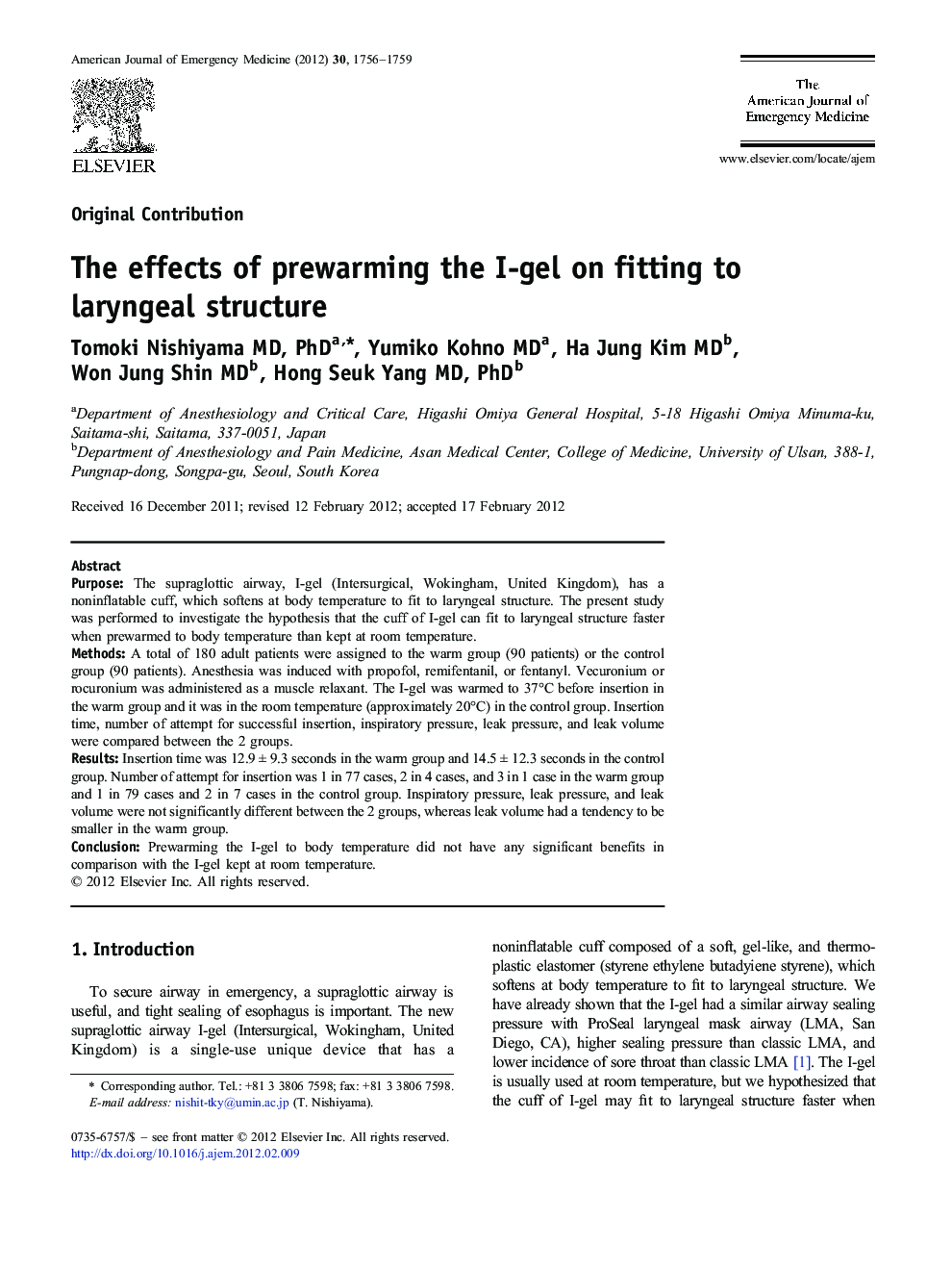| Article ID | Journal | Published Year | Pages | File Type |
|---|---|---|---|---|
| 3224891 | The American Journal of Emergency Medicine | 2012 | 4 Pages |
PurposeThe supraglottic airway, I-gel (Intersurgical, Wokingham, United Kingdom), has a noninflatable cuff, which softens at body temperature to fit to laryngeal structure. The present study was performed to investigate the hypothesis that the cuff of I-gel can fit to laryngeal structure faster when prewarmed to body temperature than kept at room temperature.MethodsA total of 180 adult patients were assigned to the warm group (90 patients) or the control group (90 patients). Anesthesia was induced with propofol, remifentanil, or fentanyl. Vecuronium or rocuronium was administered as a muscle relaxant. The I-gel was warmed to 37°C before insertion in the warm group and it was in the room temperature (approximately 20°C) in the control group. Insertion time, number of attempt for successful insertion, inspiratory pressure, leak pressure, and leak volume were compared between the 2 groups.ResultsInsertion time was 12.9 ± 9.3 seconds in the warm group and 14.5 ± 12.3 seconds in the control group. Number of attempt for insertion was 1 in 77 cases, 2 in 4 cases, and 3 in 1 case in the warm group and 1 in 79 cases and 2 in 7 cases in the control group. Inspiratory pressure, leak pressure, and leak volume were not significantly different between the 2 groups, whereas leak volume had a tendency to be smaller in the warm group.ConclusionPrewarming the I-gel to body temperature did not have any significant benefits in comparison with the I-gel kept at room temperature.
